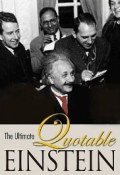 Six science books for the holiday season subjects as diverse as molecular biology pioneer Sydney Brenner, the question of antimatter, how scientists can better explain their research to non-scientists, a history of the chemical elements, scientific feuds and how innovators exploit business and technology trends.
Six science books for the holiday season subjects as diverse as molecular biology pioneer Sydney Brenner, the question of antimatter, how scientists can better explain their research to non-scientists, a history of the chemical elements, scientific feuds and how innovators exploit business and technology trends.
- Minitrends – Minitrends are emerging trends that promise to become significantly important within 2-5 years, but are not generally recognized. Unlike megatrends or microtrends, Minitrends are of a scope and importance to offer attractive opportunities to individuals and businesses of all sizes. The one that caught my eye is mention of nanotechnology and how it could be used in water purification and to make "fake" bone (I think they mean "artificial")!
- Scientific Feuds – Most science histories present a triumphant march through time, with revolutionary thinkers and their discoveries following in orderly progression. The truth, however, is very different. In Scientific Feuds, Joel Levy offers a collection of the most vicious battles among the greatest minds. It features such contests as Huxley and Wilberforce's debate on Darwin's theory of evolution, Franklin and Wilkins' fight over the discovery of DNA, and the “War of Currents” between Tesla and Edison (which ended with Edison electrocuting dogs and horses in a vain attempt to discredit Tesla's work). From passionate competition to vindictive sniping, these rivalries prove that the world of science is just as political and emotive as the rest of human endeavour.
- The Disappearing Spoon – The fascinating tales in The Disappearing Spoon follow carbon, neon, silicon, gold and every single element on the table as they play out their parts in human history, finance, mythology, conflict, the arts, medicine and the lives of the (frequently) mad scientists who discovered them.
- Explaining Research – A comprehensive guide for scientists, engineers, and physicians that draws on Dennis Meredith's forty-year career in research communications. It shows how scientists can disseminate their discoveries to important audiences and explains how to use websites, blogs, videos, webinars, old-fashioned lectures, news releases, and lay-level articles to reach key audiences, emphasizing along the way that a strong understanding of the audience in question will allow a more effective communication..
- Sydney Brenner: A Biography – Nobel Laureate Sydney Brenner has made some of the most significant discoveries in molecular biology. His reach extends way beyond his own research and has inspired countless young scientists and promoted the development of science and biotechnology around the world. Friedberg's book is based on Brenner's recollections as well as contributions and correspondence from his close friends and colleagues. It tells the lively story, not only of Brenner himself, but of what came to be known as the golden age of biology.
- The 4 Percent Universe – Only 4 percent of the universe consists of the matter that makes up you, me, our books, and every star and planet. Over the past few decades, a handful of scientists have been racing to explain what the other 96% of "everything" actually is. In The 4 Percent Universe: Dark Matter, Dark Energy, and the Race to Discover the Rest of Reality, writer Richard Panek tells the story of the search for dark matter and dark energy based on in-depth reporting and interviews with the major players—from Berkeley’s feisty, excitable Saul Perlmutter and Harvard’s witty but exacting Robert Kirshner to the doyenne of astronomy, Vera Rubin.
- Okay, I said six, but actually there’s a bonus book, the cover of which is shown above: The Ultimate Quotable Einstein, which just landed on my desk this week and is packed with the unmistakable wit and wisdom of one of the greatest thinkers of the twentieth, and perhaps any century.